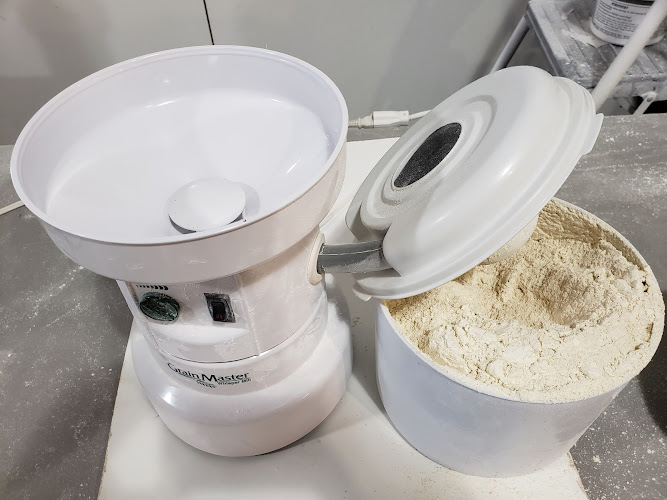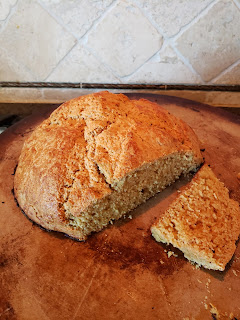Milling flour. Stone milling is said to be better as it does not heat up the grain and damage nutrients, however these WonderMill Whisper Mills from ebay (about $100 to $125), move a lot of air through so the flour temperature is only about 100 degrees F on exit. The amount that a stone mill heats up the grain depends on ambient temperature and how much grain is milled as well as the size of mill stone. Meadows and New American are popular stone mills. We are looking at some 20 inch Meadows stone mills that are 80 to 100 years old that would need some work including "dressing the stones". A used WonderMill has the capacity of an 8 inch stone mill costing $2000, although the WonderMill is not really designed for continuous use. https://meadowsmills.com/StoneBurr I think the final flour product can be similar. A lot of it is in the sifting - whichever type mill is used.
Popular posts from this blog
White Sonora and Clark's Cream are the nearest that we offer to all purpose flour. If your family is not too excited about bread from whole wheat flour, White Sonora might be a good one to try! Mild flavor as opposed to the more robust flavor of Red Fife for example. Sifting/removal of some of the bran can provide an even lighter texture. Oh, and it's on sale, 30% off most White Sonora items. Some history - White Sonora is one of the oldest wheat varieties in North America. Documented to exist near Sonora, Mexico in the 1700s but likely predates that time. The predominant wheat in California in the early and mid 1800s, was used by Norman Borlaug for the Sonora 64 semi-dwarf variety, which was one of the first Green Revolution wheats. Unfortunately, Sonora 64 led to the demise of Sonora Wheat. White Sonora Soda Bread pictured below. Pottery by very talented daughter Emily. Mud and Sage Ceramics, @mudandsage




Comments
Post a Comment